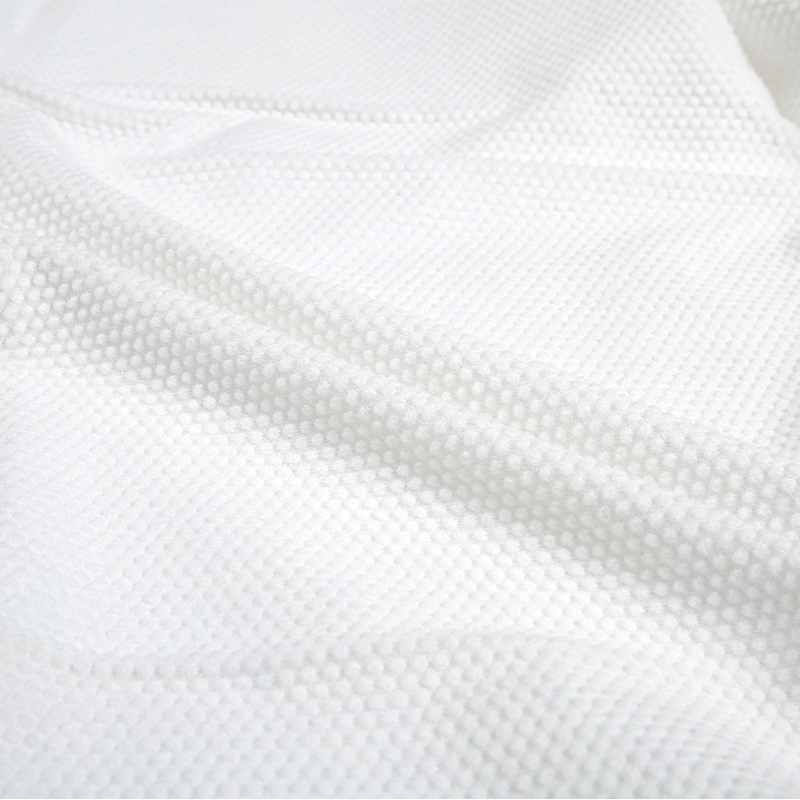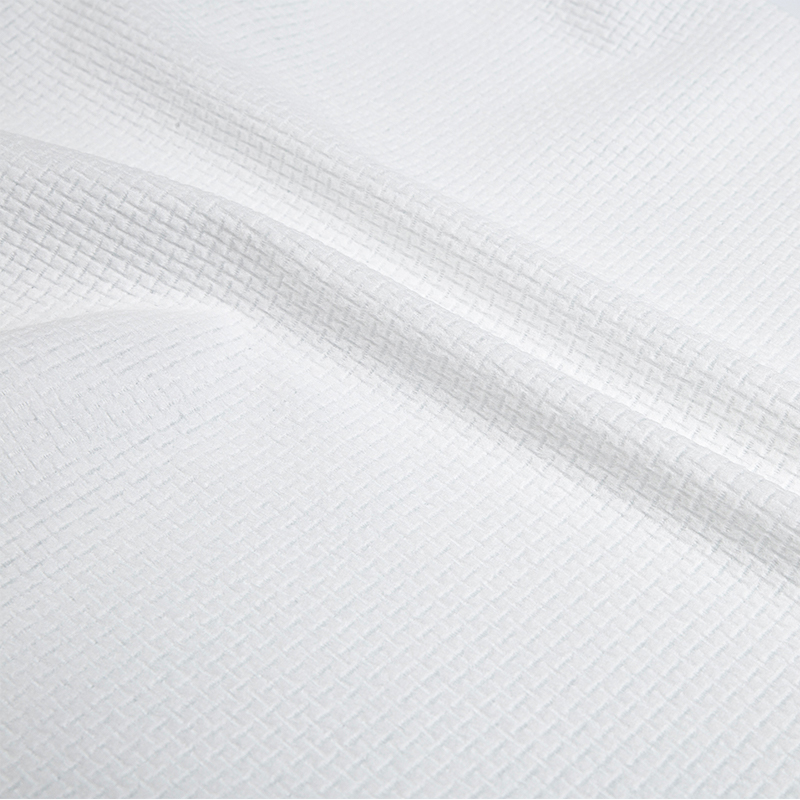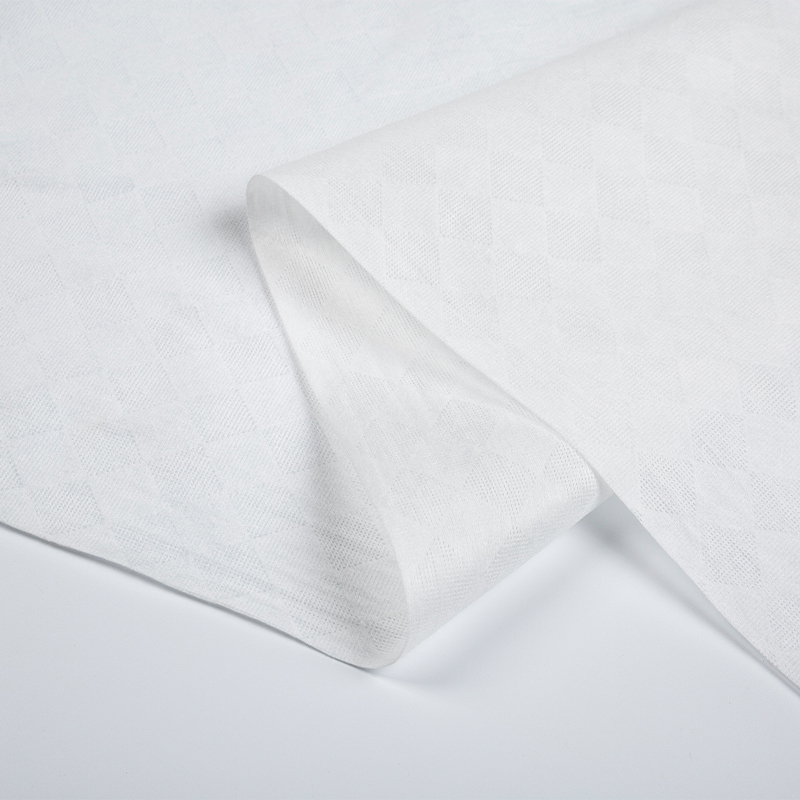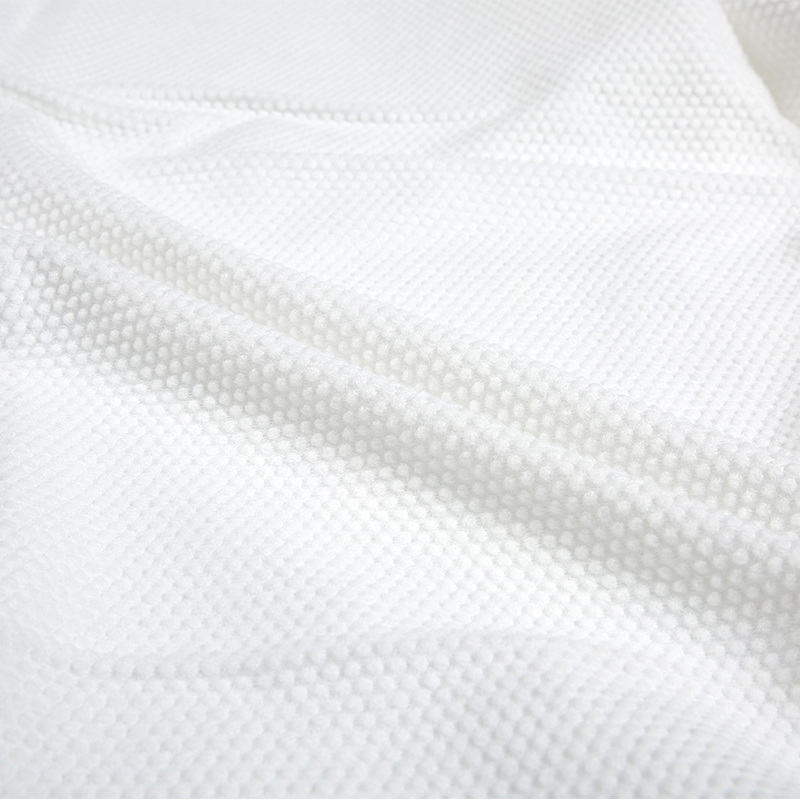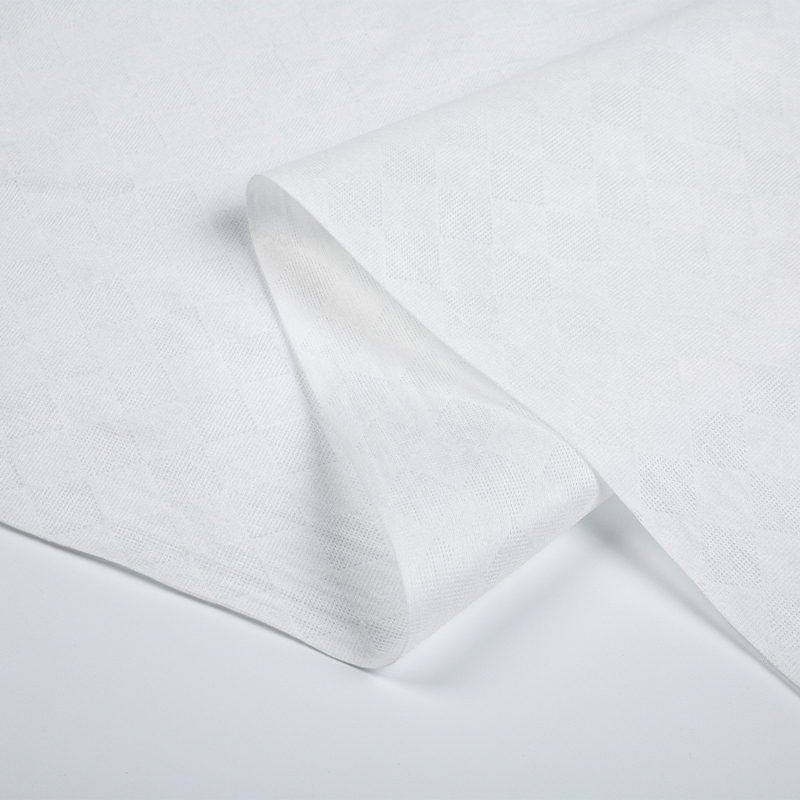Founded in 2022, Hangzhou Shunlong Nonwovens Technology Co., Ltd. is a professional China nonwoven fabric manufacturer and non-woven raw material factory
1. Optimized application of traditional antibacterial and antiviral materials
Silver ion technology:
Silver ions are widely used in nonwoven fabrics for wet wipes due to their broad-spectrum antibacterial and antiviral properties. Traditionally, silver ions are fixed on the surface or inside the fiber through physical adsorption or chemical binding, thereby achieving the inhibitory effect on bacteria and viruses.
The innovation lies in improving the stability and persistence of silver ions and reducing the irritation of Wet Wipe Nonwoven Fabric to the skin. For example, dispersing silver ions in fibers with smaller particle sizes through nanotechnology can significantly improve its antibacterial and antiviral effects and reduce the shedding and skin contact risks of silver ions.
Quaternary ammonium salt compounds:
Quaternary ammonium salt compounds are another type of commonly used antibacterial and antiviral materials. They achieve bactericidal effects by destroying the cell walls or cell membranes of microorganisms.
In nonwoven fabrics for wet wipes, quaternary ammonium salt compounds are usually applied by coating or impregnation. The innovation lies in developing more efficient and safer quaternary ammonium salt compounds and optimizing their distribution and fixation in fibers to improve antibacterial and antiviral properties and reduce skin irritation.
2. Research and development of new antibacterial and antiviral materials
Natural plant extracts:
In recent years, more and more research has focused on extracting ingredients with antibacterial and antiviral activities from natural plants, such as tea tree oil, aloe extract, etc.
These natural ingredients not only have antibacterial and antiviral effects, but also have good skin compatibility and environmental protection. The innovation lies in developing a more efficient and stable extraction process, and fixing natural ingredients in the fiber in the form of microcapsules, nanoparticles, etc., to achieve long-lasting antibacterial and antiviral effects of Wet Wipe Nonwoven Fabric.
Anti-viral textile fabrics:
For example, the safe, washable, anti-viral and anti-bacterial textile fabric developed by Tsinghua University’s Tianjin Institute of Advanced Equipment uses electron beam grafting modification technology to firmly combine anti-viral and anti-bacterial molecules with fiber macromolecules through covalent bonds to form a molecular-level fabric. Composite textile fabric.
The application of such fabrics in nonwoven fabrics for wet wipes can achieve broad-spectrum sterilization of bacteria and viruses while maintaining the durability and comfort of the fabric. The innovation lies in applying high-tech anti-viral technology to daily consumer products to improve the anti-bacterial and anti-viral properties of wet wipes.
3. Improvement of production technology and multi-functional integration
Fiber modification technology:
Modifying fibers through chemical or physical methods can improve the antibacterial and antiviral properties of fibers. For example, antibacterial and antiviral groups are introduced into the fiber molecular chain through graft polymerization, or antibacterial and antiviral materials are evenly coated on the fiber surface through surface coating technology.
The innovation lies in the development of more efficient and environmentally friendly fiber modification technology and the realization of multi-functional integration, such as simultaneously improving the antibacterial and antiviral properties, water absorption and softness of the fiber.
Intelligent manufacturing technology:
The application of intelligent manufacturing technology can achieve precise control and optimization of the production process of Wet Wipe Nonwoven Fabric. For example, various parameters in the production process (such as temperature, humidity, pressure, etc.) are monitored in real time through intelligent production lines and sensor technology, and production process parameters are adjusted based on real-time data to ensure the stability and consistency of product quality.
The innovation lies in combining intelligent manufacturing technology with antibacterial and antiviral technology to achieve intelligent and personalized customization of the Wet Wipe Nonwoven Fabric production process. For example, wet wipes products with specific antibacterial and antiviral properties can be produced according to different needs of consumers (such as sensitive skin, baby care, etc.).


 English
English 日本語
日本語 русский
русский Español
Español